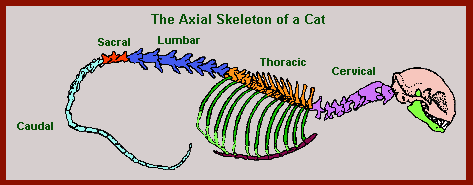Thanks, kendemyer. You've saved me the trouble of having to look into the gene claim about the tail issue here.
Question: If you call the dog's tail a leg, how many legs does it have?
Answer: Four. It doesn't matter what you call the tail.
The human "tail" is not a tail at all. They can classify this deformity as a "true tail" or a pseudotail, and they no doubt did so because of Darwinistic predispositions. It doesn't matter what you call it, it's not a tail, and looking closely at it reveals that fact conclusively.
The pseudotails are mere stumps, and are sometimes caused by elongation of the coccygeal vertebrae or other deformation. They aren't tails by any stretch of the imagination and are therefore called "psuedo=false" tails.
A significant percentage of each kind is accompanied by other, more serious complications.
http://home.coqui.net/titolugo/PSU24.html
But I'll look into the Barbary Ape, which only has a stump for a "tail", and will probably find the physiology is somewhat different than you've been describing as a human tail.
Until, then I'm going back to where I left off. (Can't wait to tackle your whale legs!)

But we would expect an atavistic tail to contain bone or cartilage. In fact, the intent of Talkorigins.org in posting the x-ray photo was to lead us to believe that the "tail", which is NOT in the photo, contained vertebrae like any other mammal's tail we would think of.I have yet to see anything that tells us that the cases of true human tails are best explained as anything other than atavisms. And I have read the link thread in its entirety.
Question: If you call the dog's tail a leg, how many legs does it have?
Answer: Four. It doesn't matter what you call the tail.
The human "tail" is not a tail at all. They can classify this deformity as a "true tail" or a pseudotail, and they no doubt did so because of Darwinistic predispositions. It doesn't matter what you call it, it's not a tail, and looking closely at it reveals that fact conclusively.
Arbitrary assumption.The three or four small, fused coccygeal vertebrae are the all the vestigal remains of a tail that most humans have.
It is a rare deformity, no doubt, but, again, just another assumption.The atavisms are when these vertebrae for full size vertebrae.
Again, the vertebrae are NOT in the "tail." It could not have been simply removed without serious consequences.Despite what your refence may have said, the picture shows three fully formed such vertebae.
As the professional literature stated, a "true tail," (the kind that really sticks out) lacks bone, cartilage, notochord and spinal cord, everything we'd expect to see in a tail. They're only called true tails because they look like tails and sometimes move. So Parker was more on the money saying it's "fatty tissue."References provide case of up to five fully formed and articulate vertebrae.
The pseudotails are mere stumps, and are sometimes caused by elongation of the coccygeal vertebrae or other deformation. They aren't tails by any stretch of the imagination and are therefore called "psuedo=false" tails.
A significant percentage of each kind is accompanied by other, more serious complications.
http://home.coqui.net/titolugo/PSU24.html
Unfortunately, your most dramatic evidence, now seen not to be evidence of an atavistic tail, was all about the vertebrae, because evolutionists insist that humans descended from something like a monkey that had vertebrae in its tail.Except that not all vertebrate animals even have vertebrae in their tails, if you want to continue that disputable assertion. The primate Macaca sylvanus has a short tail lacking vertebrae.
But I'll look into the Barbary Ape, which only has a stump for a "tail", and will probably find the physiology is somewhat different than you've been describing as a human tail.
Until, then I'm going back to where I left off. (Can't wait to tackle your whale legs!)


